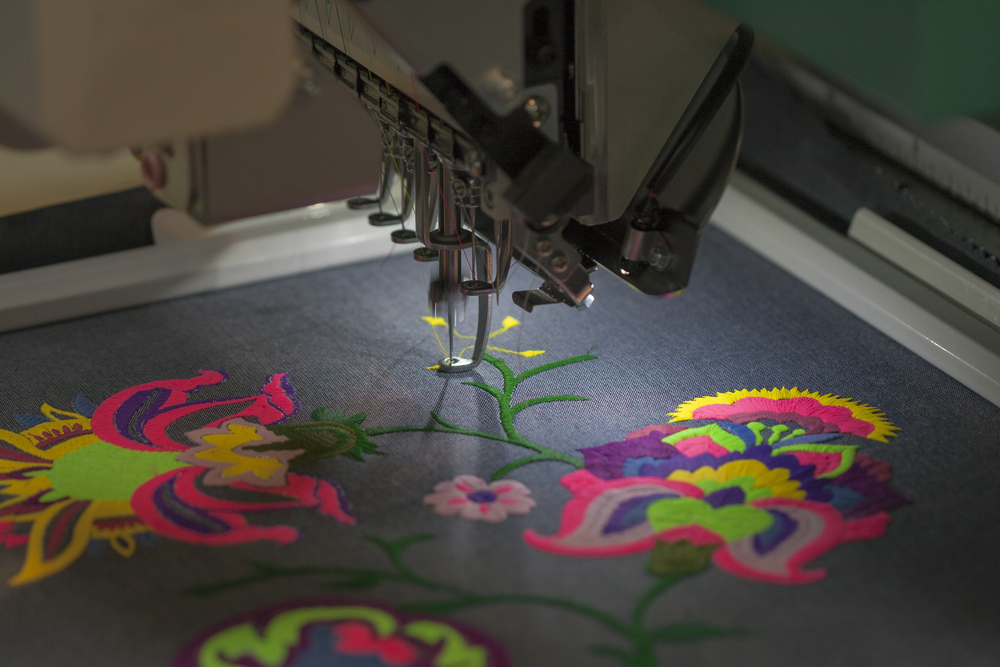Top-Rated Digitizing for Embroidery: Perfect Stitch Each Time
Top-Rated Digitizing for Embroidery: Perfect Stitch Each Time
Blog Article
Understanding the Embroidery Digitizing Process: Your Ultimate Overview
Needlework digitizing is a thorough craft that requires accuracy and competence to equate complex styles right into digital styles for device embroidery. As artisans get started on this trip to understand the needlework digitizing procedure, a thorough understanding of the essentials establishes the foundation for excellence.

Recognizing Needlework Digitizing Essentials
Needlework digitizing fundamentals create the structure whereupon complex styles are converted right into machine-readable layouts for specific sewing. This first action in the needlework digitizing procedure is crucial for guaranteeing that the final embroidered product is a faithful representation of the original design. Understanding embroidery digitizing essentials entails realizing vital principles such as stitch kinds, stitch direction, thickness, padding, and draw payment.
Sew types play an important role in determining the aesthetic and textural end result of the embroidered design. By selecting the ideal stitch kind, whether it be satin, fill, or running stitch, digitizers can accomplish the desired impact and enhance the total high quality of the embroidery. In addition, sew direction affects the circulation and dimension of the layout, while density determines the spacing and insurance coverage of the stitches.
Moreover, padding stitching gives stability to the design by protecting the fabric and protecting against distortion during the needlework process. Draw payment is another essential factor to consider to counteract the natural tendency of fabric to contract when sewn. Understanding these embroidery digitizing fundamentals is fundamental for producing professional-quality embroidered products.
Picking the Right Digitizing Software
Choosing the proper digitizing software is an important choice that significantly affects the effectiveness and top quality of the needlework digitizing procedure. Digitizing for Embroidery. When choosing the best digitizing software application, it is vital to consider elements such as the complexity of designs you prepare to produce, the user-friendliness of the software application, the degree of consumer assistance supplied, and the compatibility with your needlework equipment
There are various digitizing software options available on the market, ranging from fundamental programs for beginners to advanced software for professional digitizers. Some popular choices include Wilcom EmbroideryStudio, Hatch Embroidery Software, and PulseID. These software supply a wide variety of devices and attributes to aid you produce elaborate designs effortlessly.
Prior to deciding, it is a good idea to check out the different software alternatives with complimentary trials or demos to establish which one best fits your needs. Additionally, reviewing evaluations and seeking referrals from knowledgeable digitizers can offer useful insights right into the staminas and weaknesses of each software (Digitizing for Embroidery). By very carefully examining your requirements and contrasting the functions of different digitizing software program, you can make an informed selection that improves your embroidery digitizing process
Digitizing Tools and Strategies

Optimizing Design Settings for Needlework
Grasping the intricacies of style setups is fundamental in attaining optimal results in the needlework digitizing procedure, building upon the foundation laid by recognizing digitizing tools and methods. When maximizing design setups for needlework, it is vital to take into consideration factors such as stitch type, thickness, padding, pull payment, and enrollment. Enrollment settings line up various elements of the design precisely, keeping overall style honesty.

Troubleshooting Common Digitizing Issues
When experiencing usual digitizing issues throughout the needlework process, it is vital to understand the origin and carry out efficient options without delay. One typical issue is stitch thickness issues, where stitches may be as well thick, causing the page fabric to tighten, or also sparse, resulting in voids in the design. Changing the stitch thickness setups in the digitizing software see it here application can help solve this concern.
Another constant difficulty is string breaks throughout the embroidery process. This can happen as a result of numerous reasons such as inaccurate stress setups, plain needles, or making use of low-grade string. Guaranteeing appropriate maintenance of the embroidery device, consisting of routine needle modifications and stress changes, can decrease the event of string breaks.
Moreover, layout enrollment mistakes can cause misaligned components within the needlework style. Inspecting the style positioning in the digitizing software application and making needed modifications before stitching can help in preventing this issue. By dealing with these usual digitizing issues quickly and efficiently, you can guarantee a smoother embroidery procedure and top quality finished items.
Verdict
In verdict, grasping the embroidery digitizing procedure calls for a solid understanding of the basics, the right option of software application, and understanding of tools and strategies. Enhancing design setups and fixing common digitizing concerns are vital steps in ensuring high-quality needlework results. By adhering to these steps diligently, one can attain precision and efficiency in the digitizing procedure.
Report this page